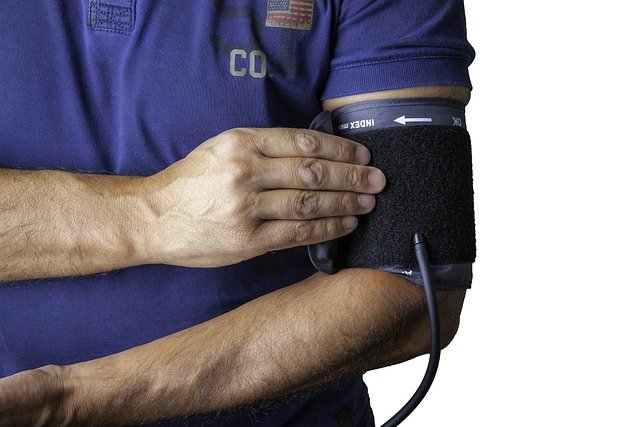Understanding the Price of Portable Ultrasound Devices
Portable ultrasound technology has revolutionized medical diagnostics by bringing advanced imaging capabilities directly to patients' bedsides, emergency scenes, and remote healthcare facilities. These compact devices offer healthcare professionals the flexibility to perform immediate diagnostic imaging without the constraints of traditional, room-sized ultrasound systems. Understanding the pricing structure and factors that influence portable ultrasound costs is essential for medical practices, hospitals, and healthcare providers looking to invest in this valuable diagnostic tool.

What Makes Portable Ultrasound Devices Essential
Portable ultrasound devices serve multiple critical functions in modern healthcare delivery. Emergency medical technicians use handheld units for rapid trauma assessments, while rural healthcare providers rely on these devices to offer diagnostic services in areas lacking access to full-scale imaging facilities. The technology enables point-of-care testing, reducing patient wait times and improving diagnostic accuracy in time-sensitive situations. These devices typically weigh between 2-15 pounds, making them significantly more manageable than traditional ultrasound machines that can weigh several hundred pounds.
Key Applications for Portable Ultrasound Uses
Healthcare providers utilize portable ultrasound technology across numerous medical specialties and settings. Cardiologists employ handheld devices for bedside echocardiograms, while emergency physicians use them for focused assessment with sonography in trauma cases. Obstetric care benefits tremendously from portable units, allowing healthcare providers to monitor fetal development during home visits or in underserved communities. Additionally, these devices prove invaluable for musculoskeletal imaging, vascular assessments, and guided procedures such as IV insertions and biopsies.
Factors Influencing Portable Ultrasound Prices
Several key factors significantly impact portable ultrasound pricing structures. Device capabilities represent the primary cost driver, with basic handheld units offering limited imaging modes while advanced systems provide multiple transducer compatibility and sophisticated software features. Brand reputation and manufacturer support services also influence pricing, as established medical device companies typically command premium prices for their proven reliability and comprehensive warranty programs. Additional considerations include battery life, image quality resolution, data storage capacity, and wireless connectivity options for seamless integration with electronic health record systems.
How to Find the Right Price for Portable Ultrasound Equipment
Determining appropriate pricing for portable ultrasound devices requires careful evaluation of specific clinical needs and budget constraints. Healthcare providers should assess their primary use cases, required imaging modes, and expected patient volume before comparing available options. Engaging with multiple vendors allows for comprehensive price comparisons and negotiation opportunities, particularly for bulk purchases or multi-year service agreements. Leasing arrangements often provide cost-effective alternatives to outright purchases, especially for smaller practices or those seeking to minimize upfront capital expenditure while maintaining access to current technology.
| Device Model | Manufacturer | Estimated Price Range | Key Features |
|---|---|---|---|
| Vscan Air | GE Healthcare | $8,000 - $12,000 | Wireless probe, smartphone app |
| Lumify | Philips | $6,000 - $9,000 | Tablet-based system, multiple transducers |
| Butterfly iQ+ | Butterfly Network | $2,000 - $3,000 | Single probe, AI-powered imaging |
| Clarius C3 | Clarius Mobile Health | $5,000 - $8,000 | Wireless connectivity, cloud storage |
| SonoSite iViz | Fujifilm Sonosite | $10,000 - $15,000 | Advanced imaging modes, rugged design |
Prices, rates, or cost estimates mentioned in this article are based on the latest available information but may change over time. Independent research is advised before making financial decisions.
Evaluating Long-Term Value and Return on Investment
Beyond initial purchase prices, healthcare providers must consider ongoing operational costs and potential revenue generation when evaluating portable ultrasound investments. Maintenance agreements, software updates, and transducer replacement costs contribute to total ownership expenses over the device’s lifespan. However, portable ultrasound systems often generate positive returns through increased patient throughput, reduced referral costs, and enhanced diagnostic capabilities that can justify premium pricing. Many practices find that point-of-care ultrasound services create new revenue streams while improving patient satisfaction through immediate diagnostic results and reduced appointment scheduling requirements.
The portable ultrasound market continues evolving rapidly, with technological advances driving both capability improvements and cost reductions. Healthcare providers benefit from thoroughly researching available options, comparing pricing structures, and evaluating long-term operational considerations before making investment decisions. While initial costs may seem substantial, the diagnostic capabilities, improved patient care outcomes, and potential revenue generation often justify the investment in quality portable ultrasound technology.
This article is for informational purposes only and should not be considered medical advice. Please consult a qualified healthcare professional for personalized guidance and treatment.




